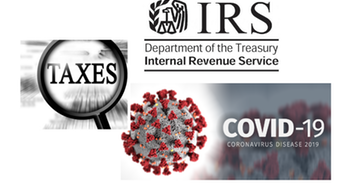Overview of the retirement plan changes in the Tax Cuts and Jobs Act (“TCJA”)
Here’s a look at some of the more important changes in the TCJA that affect retirement plans. Except with regard to the disaster-related provisions (which contain special effective dates), the changes are effective for tax years beginning after 2017.
- Recharacterization of IRA contributions. An individual who makes a contribution to a regular or Roth IRA can recharacterize it as made to the other type of IRA via a trustee-to-trustee transfer before the due date of the return for the contribution year. Under the new law, however, once a contribution to a regular IRA has been converted into a contribution to a Roth IRA, it can no longer be converted back into a contribution to a regular IRA, i.e., a recharacterization cannot be used to “unwind” a Roth conversion. For any conversions made by taxpayers to a Roth IRA during 2017, there is uncertainty about whether the effective date of this provision (tax years after 2017) refers to the tax year of the recharacterization, or the tax year of the unwinding. If the effective date is the tax year of the recharacterization, then those taxpayers would have until Oct. 15, 2018 to unwind the 2017 recharacterization (provided they meet the requirements for an automatic extension of the election period). If the effective date is the tax year of the unwinding, then those taxpayers would have had only until Dec. 31, 2017 to do the unwinding. Thus, there is a need for a technical correction to the law, or clarification by IRS.
- Extended rollover period for plan loan offset amounts. If an employee’s loan from his qualified retirement plan, Code Sec. 403(b) plan, or Code Sec. 457(b) plan is treated as distributed from the plan due to the plan’s termination or the employee’s failure to meet the repayment terms due to his separation from service, the employee may roll over the deemed distribution to an eligible retirement plan. The new law allows the rollover to be made any time up to the due date (including extensions) of the employee’s tax return for the year of the deemed distribution. Pre-Act law allowed the employee only 60 days from the date of the distribution.
- Length of service awards to public safety volunteers. Under pre-Act law, a plan that only provides length of service awards to bona fide volunteers or their beneficiaries for qualified services performed, is not treated as a deferred compensation plan for Code Sec. 457 purposes. Qualified services are fire fighting and prevention services, emergency medical services, and ambulance services, including services performed by dispatchers, mechanics, ambulance drivers, and certified instructors. The new law increases the limit on the aggregate amount of length of service awards that can accrue in a year of service for a bona fide volunteer from $3,000 to $6,000, to be adjusted annually for inflation. For a defined benefit plan, the limit applies to the actuarial present value of the aggregate amount of awards accruing for any year of service.
- Qualified disaster distributions taxable over three-year period. Under the new law, a “qualified 2016 disaster distribution” will be included in a taxpayer’s gross income ratably over a three-year period starting with the year it is received, unless the taxpayer elects to have the distribution fully taxed in the year it is received. A “qualified 2016 disaster distribution” is a distribution received from an “eligible retirement plan” in 2016 or 2017 by an individual whose place of abode was in a Presidentially declared disaster area at any time during 2016, and who sustained an economic loss from the disaster. An eligible plan is an IRA, individual retirement annuity, qualified plan, Code Sec. 403(a) qualified annuity plan, Code Sec. 403(d) plan, governmental Code Sec. 457(b) plan, or Code Sec. 403(b) annuity contract. There is a $100,000 aggregate limit on qualifying distributions for these purposes.
- Qualified 2016 disaster distributions not subject to 10% early withdrawal penalty. In general, unless an exception applies, withdrawals from qualified plans and IRAs before age 59 and a half are subject to a 10% penalty in addition to regular taxation. Under the new law, a “qualified 2016 disaster distribution,” defined above, will not be subject to the 10% penalty on early withdrawals from qualified plans and IRAs.
- Three-year period to recontribute qualified 2016 disaster distributions. In general, eligible distributions from qualified plans and IRAs can be rolled over into eligible plans within 60 days to avoid being taxed. Under the law new, qualified 2016 disaster distributions, defined above, can be recontributed to a qualified plan or IRA in which the taxpayer is a beneficiary up to three years beginning the day after the date of distribution and avoid taxation. A recontribution is treated as a direct trustee-to-trustee rollover.
- Period to amend qualified plans and IRAs for new law changes extended. Under the new law, a qualified plan or IRA can be amended for new law changes retroactively any time up to the last day of the first plan year beginning after 2017 without losing its qualified status for actions taken in compliance with the law changes. Thus, e.g., a qualified plan can make a qualified 2016 disaster distribution in 2017 without first amending the plan to allow such a distribution, as long as the amendment is made retroactively before the end of the extension period. For governmental plans, the amendment may be made up to the last day of the first plan year beginning after 2019.
© 2018 Thomson Reuters/Tax & Accounting. All Rights Reserved.


